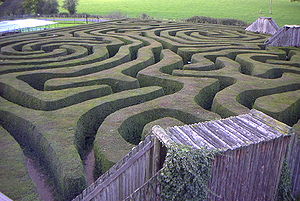 Batch Processing, Patient Flow and the Science of How to Get Home On Time
Batch Processing, Patient Flow and the Science of How to Get Home On Time
Do you find yourself spending too much time on things that have nothing to do with seeing patients – and then getting home later than you would like?
Do you notice that for every 15 minutes you spend with a patient you spend WAY more than that messing around in the EMR and being distracted by things like prescription refills, test results and a hundred other forms of two bit clerical work in your day?
Does your organization expect you to access your EMR from home to complete chart notes in the evenings after you have tucked your kids into bed?
I wish I had a chance to shadow you in your office, because there are a number small changes you can make right now that will shave hours off of your “non-clinical activities.”
They don’t teach these things in residency, so let me share the top two tools I have found to get you home on time – with your charts done – more often. If you are not doing these two simple tasks every day in the office you are working WAY too hard and getting home at least an hour later than you have to.
NOTE:
There is no way to get home on time every single day – much as our perfectionist tendencies would like that to be the case – and 75 – 85% is a worthy goal to aim for. Just because these things don’t work on every single office day – don’t let that stop you from doing them every day. They will make every day better that if you DON’T use them. I will promise you that for sure.
Home-on-time tool #1
The BID Team Huddle
Here is a full training on BID Team Huddle Technology.
Home-on-time tool #2
Batch Processing
 Doctors are a lot like dogs in some ways. If a dog is sitting on the porch and I get their attention and throw a tennis ball, they can’t NOT chase it. They can’t resist.
Doctors are a lot like dogs in some ways. If a dog is sitting on the porch and I get their attention and throw a tennis ball, they can’t NOT chase it. They can’t resist.
With doctors, the tennis ball is a refill request that pops up on your EMR screen. It is not urgent and yet how often do you drop what you are doing to address it? We mistake EVERY action as a URGENT one and chase them, just like the dog and the tennis ball.
Add in test results, phone messages, referral paperwork, and your day is fractured into a hundred pieces for one simple reason. You are taking care of these items one at a time and allowing them to interrupt your patient flow.
Sure, they only take 2-3 minutes each. Add it up though and you will get 60-90 minutes of wasted time in your day. No other industry would allow that kind of inefficiency. Yet in medicine, it is every doctor for themselves when it comes to figuring out how to handle these non-urgent tasks. AND no one teaches you how to do a good job.
The Solution Is Batch Processing
All the tasks that are non-urgent should be batched and done in a batch twice a day. In the days of paper charts we used to put out a basket for each task type. Refills go in this basket. Test results go in that one when they return.
Twice a day you “run the basket” and boom, boom, boom … all of the tasks are done.
In a standard office day where you have an AM and PM schedule, some good times to do batch processing are 11:30 AM and 4:30 PM. That way the morning’s work is done before lunch and the afternoon’s work before you go home.
EMR’s make this a little different because often these non urgent tasks pop up as alerts on your tablet, laptop or desktop screen. These prompts are equally enticing to our dog-like “fetch” mechanism and even more powerful time wasters.
Batch these too by NOT addressing them when they come in. Make a “virtual basket” that you run in a batch twice a day.
What can you batch in your practice?
Your answers to this question (and the BID Huddle) are the keys to getting home on time more often.
Power Tip #1:
Ask your team this same question and let them join in the effort to get you out of the office by 6.
“What tasks happen every day – things that are not urgent, yet have to be done before the day is over – are one’s can we put in batches and do all at once, in batches twice a day?”
“Which ones require my MD-level attention and which can be done by someone else on the team?”
Power Tip #2 – Old School
I have a client who was extremely distracted by the Instant Messenger function on her EMR. All of the staff would relay IM’s for each patient phone message and refill. They would pop up on her tablet computer as a little flashing counter – like the old “You’ve got mail” function back in the day.
Her IT people said there was no way to disable the counter so we went Old School.
Now she uses a little post it note. She puts in on the screen over the counter so she can’t see the messages as they come in because that small portion of the screen is covered by the post it note. She takes it off at 11:30 AM and 4:30 PM to run the batch of messages.
Sometimes you have to get creative to batch in our modern electronic environment and it can be done. Ask your team (see above) if you are having trouble coming up with solutions on your own. (BTW, you are never alone in the office. Use your team!)
====================
What can you batch?
How can your team help?
When will you get started?
With these two tools and the discipline to do them every day, you will shave a minimum of 45 minutes off of each half day at work – barring one of those “days from hell” that come up every other week. This is the best way my clients have found to start getting home earlier and the first two tools I recommend to all my coaching clients.
PLEASE LEAVE A COMMENT on your experience with batch processing and/or the BID Team Huddle.









